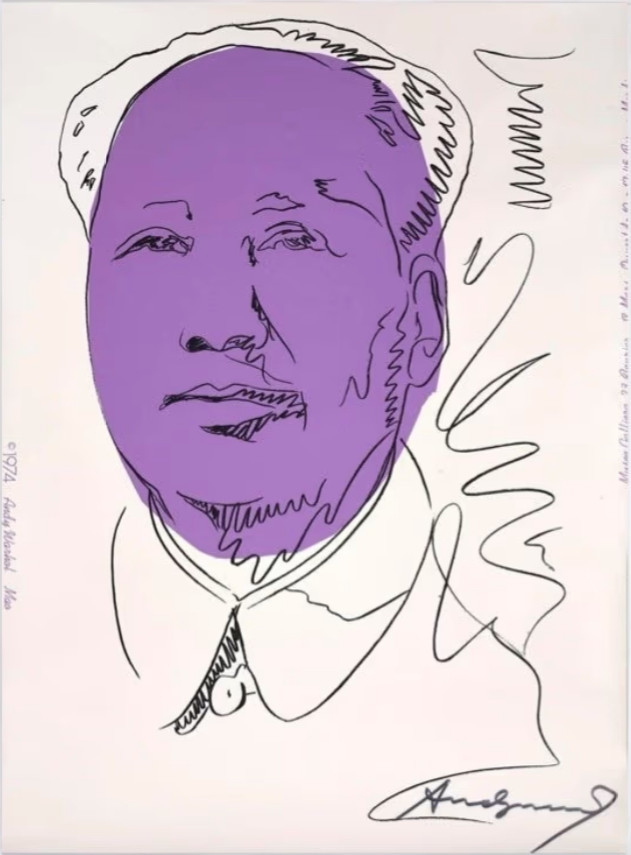


Mao, 1974
Screenprint on wallpaper, 102 x 75 cm (40¼ x 29½ in), approx. 100 signed from an unlimited edition.
F&S II.125A
By the time Andy Warhol transformed Mao Zedong into a Pop Art icon, the founder of the People’s Republic of China had already cemented his own legacy and reshaped the nation. However, the Cultural Revolution was nearing its end, and by the late 1970s, economic reforms were gradually steering China away from a command economy. Warhol’s silkscreen adaptation of Mao not only captured this turning point but also hinted at China’s eventual shift into Western markets. His choice to rework Mao’s widely recognized portrait created a striking synthesis between PRC propaganda and mainstream Pop Art. The complete Mao series that this edition is a part of serves as a powerful artistic reflection of the diplomatic shifts between the U.S. and China in the early 1970s. The transformation of Mao into a celebrity figure was highly controversial, as he discouraged media-driven fame. Yet, his image became inseparable from his leadership, evolving into a potent political and cultural symbol. Andy Warhol's reinterpretation went even further and turned the communist leader into a pop icon and a consumable object.